This post may contain affiliate links. Read my full disclosure here.
As an Amazon Associate I earn from qualifying purchases.
Not surprisingly (I hope), grits are one of those foods that are simply better made from scratch. When I say “made from scratch” I don’t mean not choosing the instant kind. I mean: transforming dried whole corn kernels into cornmeal with your home mill. So before we get started with how to make home ground grits fresh in your own kitchen, here are some FAQs.
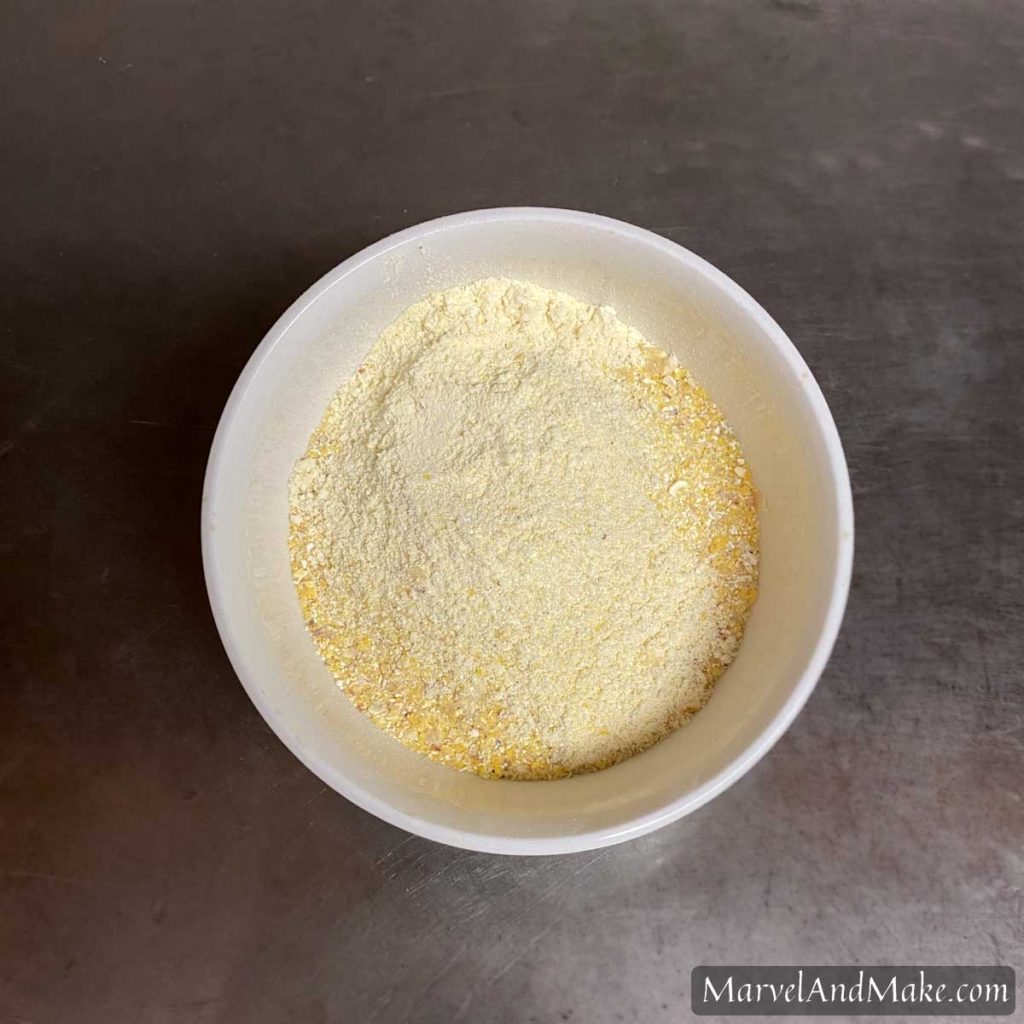
#1 – Can I grind my own grits at home?
Yes, you sure can make your own home ground grits. And it’s so easy. The best machine to use is a grain mill BUT you can also use a food processor, a heavy duty blender, or even a coffee grinder. If you’re going this route, however, pulse the grind and work in small batches rather than trying to do everything at once and at full speed. You will risk warming the corn too severely, giving it a burnt flavor.
#2 – What grain mill do you recommend?
I very recently made the switch from a NutriMill Classic to a Mockmill. Even though I completely loved my NutriMill, and I’m happy that I switched, I would also still recommend a NutriMill. Both are great. The only difference I need to point out as it relates to corn is that with a Mockmill you cannot mill popcorn. Popcorn has a hard outer shell that is difficult to mill in a stone mill (ie. a Mockmill). So, if you get a Mockmill, you will need to stick with dent corn, which has a softer outer layer.
#3 – Where can I find corn to mill?
Most of the corn I purchase I get through a local grain co-op. I buy it in larger quantities to take advantage of the bulk pricing. But there are many companies who sell it online. Breadtopia, Country Life Natural Foods, and Purcell Mountain Farms are a few good options. Just make sure the corn you purchase is organic.
#4 – What type of corn should I use to make grits?
Corn that’s considered a “grain” and can be used for milling into either coarse cornmeal (for grits) or a fine flour falls into the “field corn” category. Meaning, it was dried on the stalk while still in the field. The two main groups of field corn are dent corn (typically yellow or white or even blue) and popcorn.
Dent corn is widely recommended for grits, cornbread, polenta, etc. but popcorn also works really well. Just note that popcorn cannot be milled in a stone mill, like I mentioned above.
#5 – Is Corn Gluten-Free?
Corn is naturally gluten-free. If you have Celiac disease and cannot tolerate gluten even in small doses, always check the label to be certain the corn wasn’t processed in a facility that may have allowed it to come in contact with wheat.
#6 – Cornmeal versus corn flour – what’s the difference?
Cornmeal is coarsely ground corn and corn flour is finely ground corn. Both are made from dried whole corn kernels. The corn kernels are most popularly yellow or white dent corn or popcorn.
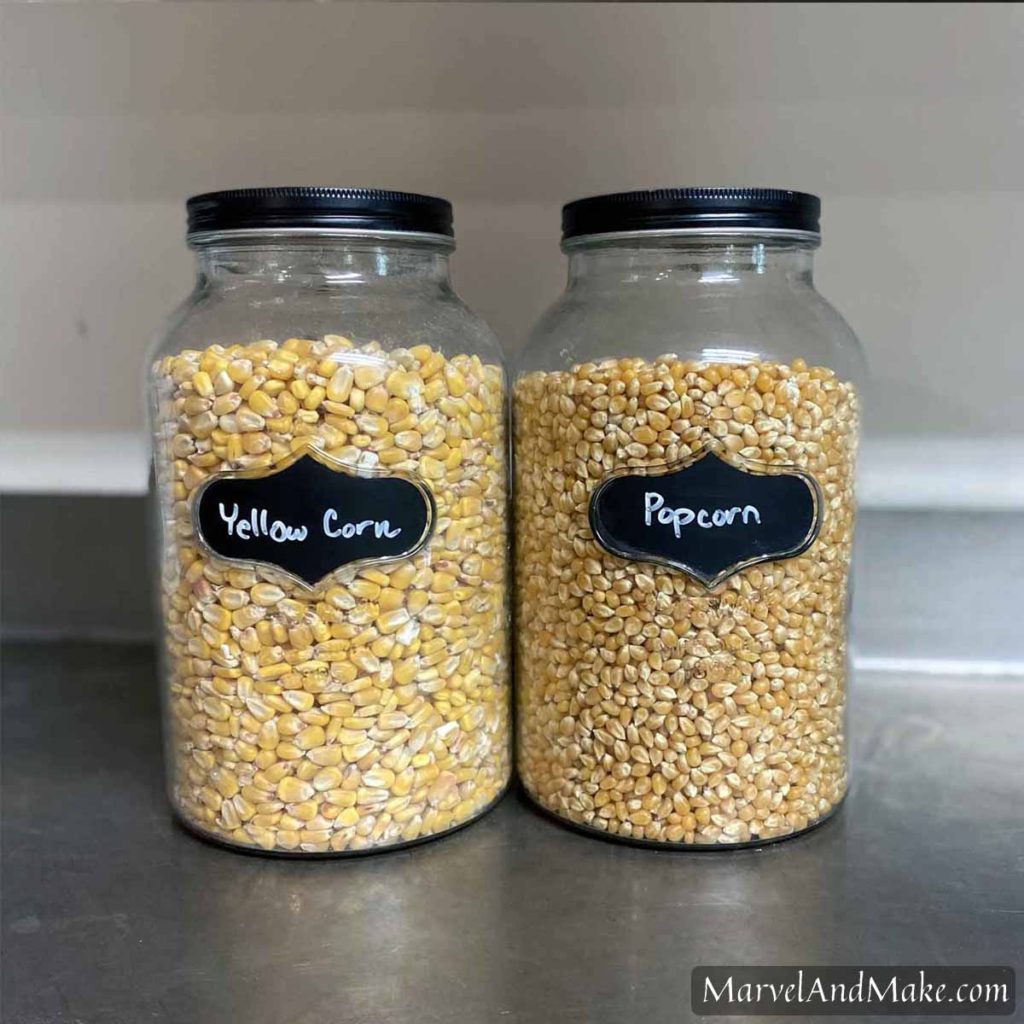
#7 – Why is it important to make home ground grits?
Home-milling allows the vital nutrients found in grains to remain intact. Corn in its complete state (as a whole grain) is high in B vitamins and Niacin. It also contains a variety of other minerals such as vitamin A, Magnesium, Manganese, Thiamine, and Phosphorus.
Fresh milled corn that is utilized right away retains these nutrients. Corn has oils that will go bad rather quickly after the kernel is broken open. This is why home milling is the better choice. You will also find that corn milled at home is nutrient dense, allowing you to feel fuller longer. For more on why milling grains at home is the better choice and how to get started, check out my article: Homemade Flour from Whole Grains.
Here’s Your Go-To Basic Grits Recipe:
Grind 1 1/2 cups of corn at home using a grain mill, blender, or food processor. Please note the tips I mentioned above to ensure the successful milling of corn into grains.
In a heavy bottomed sauce pan, bring 4 cups of water to a boil. Reduce the heat to medium and whisk the grits into the water slowly. It’s important to whisk while you pour the grits, breaking up any clumps as you go.
Once the grits are properly mixed in and no chunks are present, add 1 teaspoon of salt and three tablespoons of butter to the pot. Stir until thickened, roughly 3 minutes. Then cover with a tight fitting lid and reduce the heat down to a simmer. Cook for 20-25 minutes.
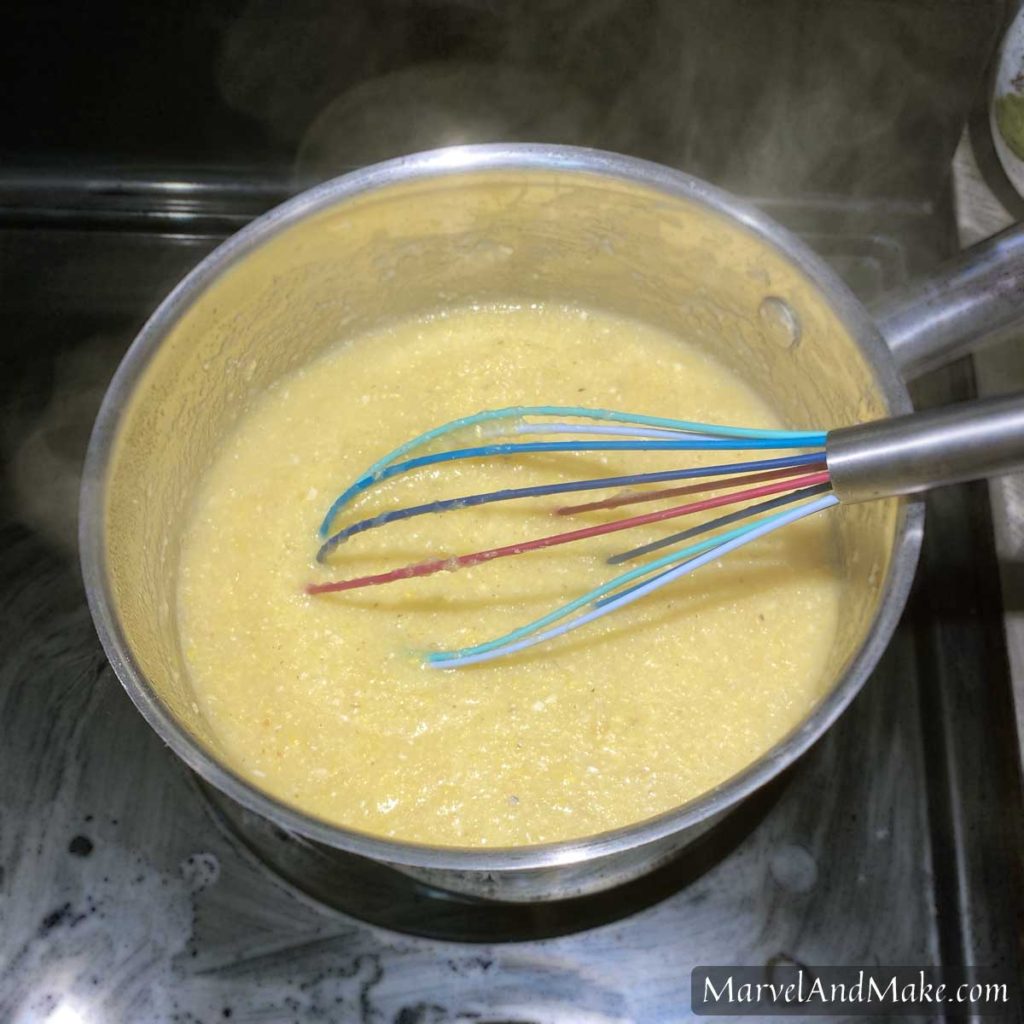
Grits are best served warm. You can stir in extra butter and salt, to taste. Cheesy grits are a southern staple and if you haven’t had them, welcome to the south. Just mix in about 2 cups of your favorite cheese (cheddar, parmesan, etc.). I will also add milk or heavy cream – just taste it as you go.
And one last question: When is the best time to eat grits?
Anytime, obviously. Grits are excellent for breakfast served along with runny or scrambled eggs. They are also delicious with savory pork or shrimp. Check out my Creamy Shrimp and Grits recipe.
Leave a comment below letting me know if you tried this recipe and what you thought! Did you grow up eating grits or polenta? Or both or neither?
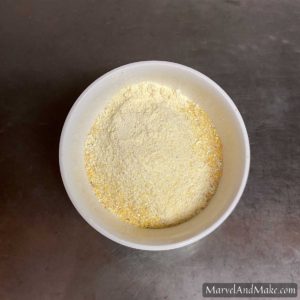
Home Ground Grits
Equipment
- 1 Grain Mill
Ingredients
Home Ground Grits
- 4 cups Water
- 1½ cups Coarsely ground corn (ie. cornmeal)
- 1 tsp Salt
- 3 tbsp Unsalted Butter
Instructions
- Using your home mill, coarsely grind white or yellow corn into grits. In a heavy bottomed sauce pan, bring 4 cups of water to a boil.4 cups Water
- Reduce heat to medium and slowly whisk in grits, breaking up any chunks as you pour. Add salt and butter and stir until thickened, roughly 3 minutes.1½ cups Coarsely ground corn (ie. cornmeal), 1 tsp Salt, 3 tbsp Unsalted Butter
- Cover and reduce heat to a simmer. Cook for 20-25 minutes. Serve warm.*
Video
Notes
Nutrition
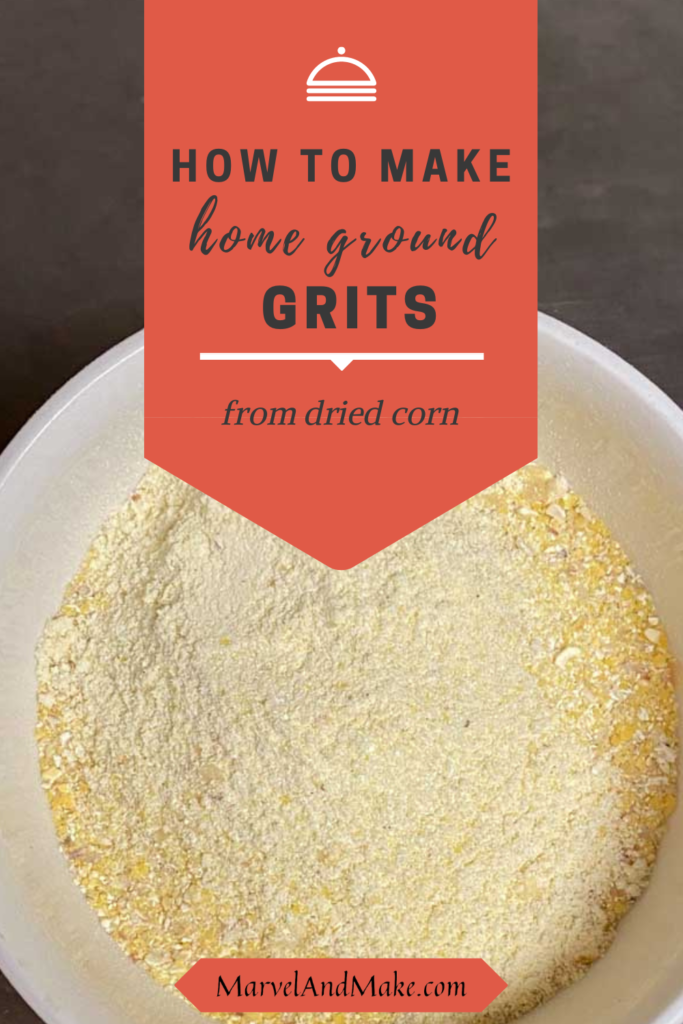

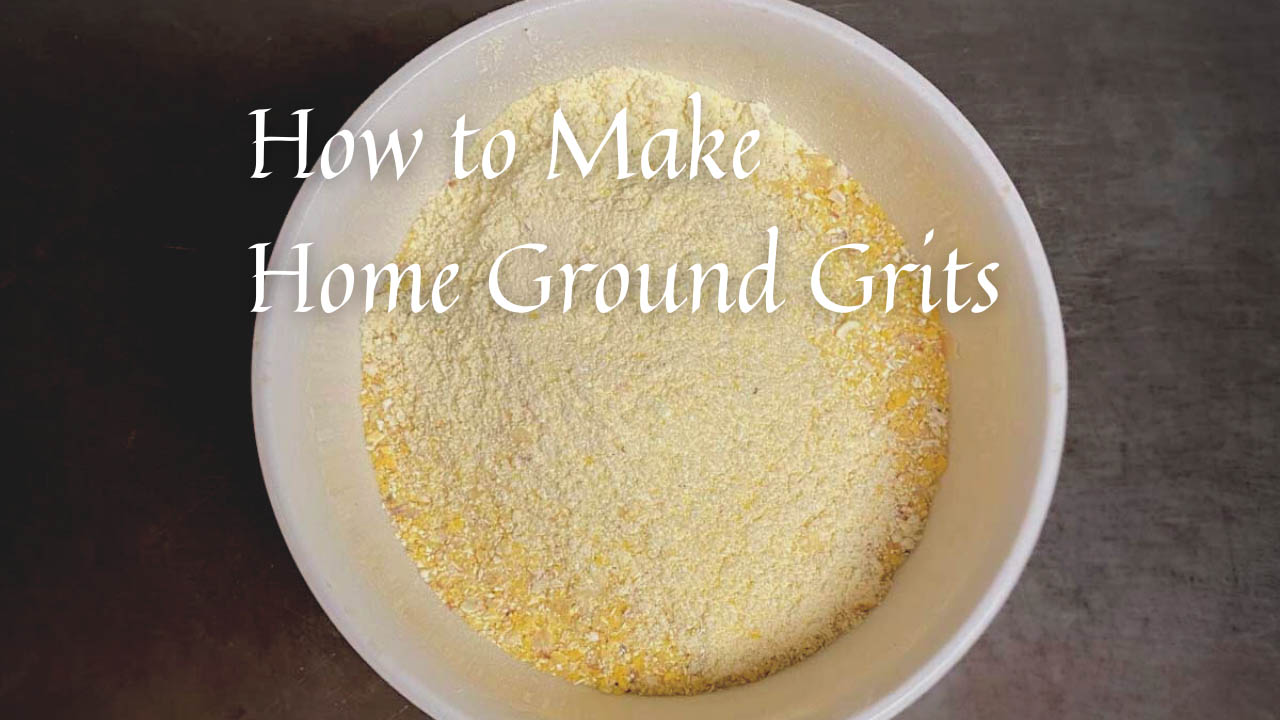
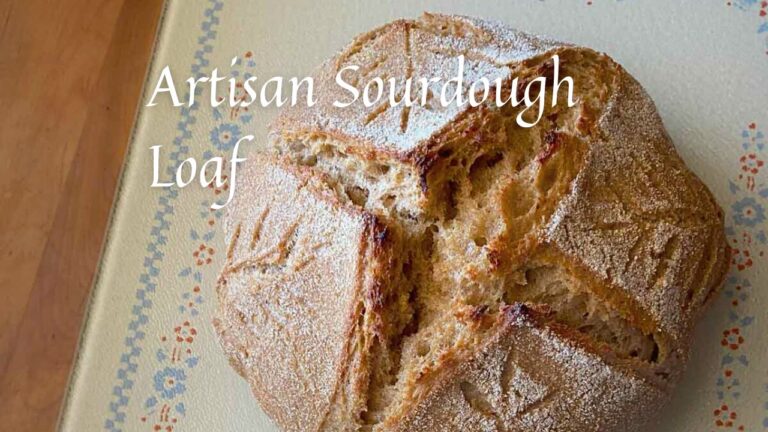
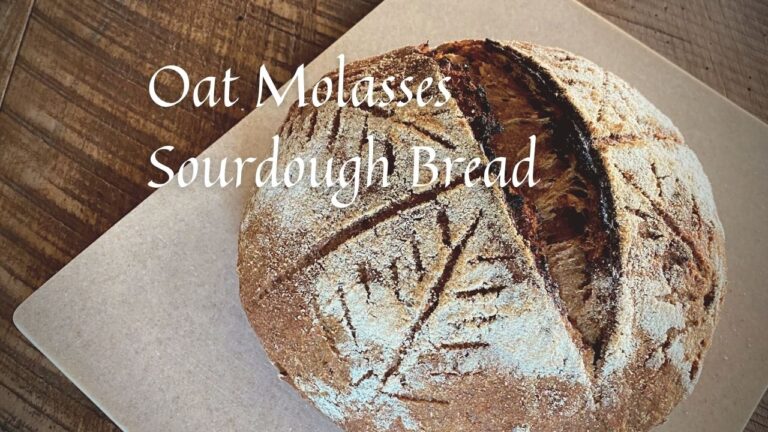
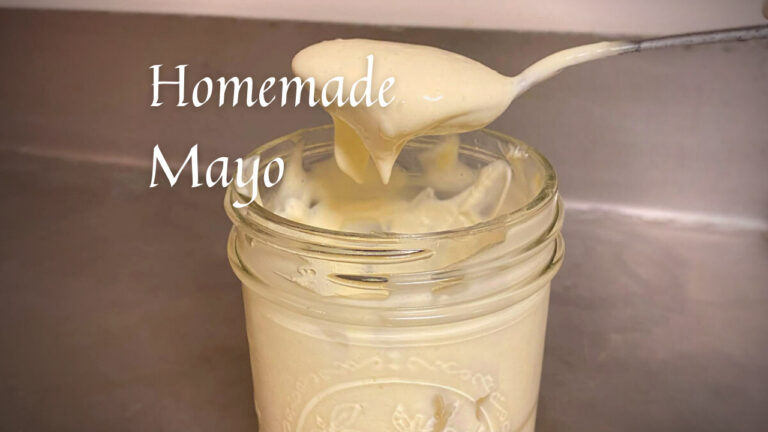
I’m sorry but what you are describing here is not grits at all. The corn has to be nixtamalized — soaked in a lye solution — before is can really be called grits. True grits are actually hard to find. Michael
Hi Michael! Thanks for your feedback. I believe that you’re referring to hominy grits, which do need to be nixtamalized. From the reading I’ve done, the grits I’m describing above still count as “grits,” just not hominy grits. Please let me know if you find any information contrary to what I’ve written. Thank you so much!
Brittney
“Non-hominy grits” seems to mostly be deceptive marketing for polenta. At least in the Midwest and South of the U.S. grits exclusively refers to ground hominy, with the other kind going by polenta or mush.
Hi Jordan, very good information! Thanks for your comment. 🙂
Glad this is the first comment! Where I’ve lived in the U.S. (great lakes region, south, and now pacific northwest) grits are pretty ubiquitous and found at every grocery store, but if you are somewhere that grits aren’t common your next best bet is a latino grocery. They’ll often sell dried hominy.
I added cheese (probably 2 cups shredded) and served them with fried fish. They were a huge hit!
I’m not sure if these are “true grits” or not but honestly who cares? This recipe is simply amazing. I don’t even like grits, but I’d eat these with every meal. Do yourself a favor and try this recipe!
Ahh, thanks so much for the comment, Ryan! Glad you loved them.
Thanks for the great information, Brittney! I’ve never thought of making my own stone ground grits, but you make it look easy. Real food for the win!
Oh thanks, Corey! Real food really does make all the difference.
Hi Brittney!
Thank you for sharing all this helpful information! I have a mockmill and find that even when I mill the corn on a course setting, much of it comes out too fine. This part of this grits taste like I have boiled cornmeal rather made grits. Do you ever sift or how do you prevent making fine pieces? Thank you!
Hi Katie!
I’m probably a bit strange, I like a finer grit. But, have you tried milling it twice? You can set your mill to very coarse and run the corn through, then turn it down just a bit and run it through again. That might give you a more grit-like consistency.
Thank you so much for this tip! I will try it.
Yeah these aren’t technically grits. Its polenta but im definitely going to make some of my own along with grits.
Thanks for the comment and information, Lauren! I hope they turn out delicious. 🙂
What kind of seed corn can you grow to grow yiur own corn for grits. I have got some Fram land and would like to grow my own.
Hi Jane! I have used both dent corn and popcorn for making grits. (Just note that some mills canNOT mill popcorn because of its hard outer shell.) As for growing it, I would research which type and variety would be good for your area. Let me know if you give it a try!
What kind of corn are you talking about. It has to be dried to grind it, right? How do you dry it? Other than that, do you buy, what, feed corn? What is dent corn? Sorry to be so ignorant but I just lost my retirement thanks to the Trump machine so at 74, I’m trying to become self-sufficient.
Hi Cheryl! You don’t want feed corn… I buy mine from Bread Beckers out of Woodstock, GA but Azure Standard is also a good place to source corn or wheat for grinding: https://www.azurestandard.com/shop/product/food/grains/corn/whole/yellow/whole-yellow-corn-organic/7438?package=GR026&a_aid=83e32a3b35
And yes, it should be dried but I have never gone through that process myself, I just buy it ready to mill. 🙂